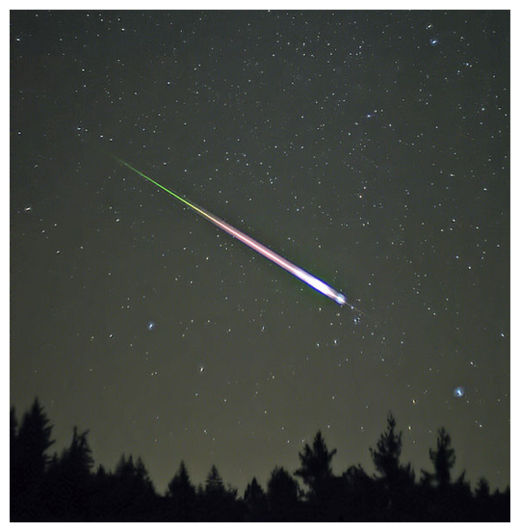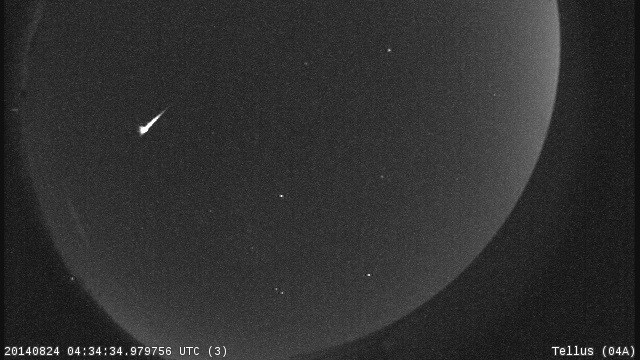
© Wikimedia Commons
It might have been the size of a pea, or maybe as big as a football. Still, streaking across the Boulder skies late Tuesday night, it made quite an impression on those who saw it.
Trevor Ycas, who lives in the Martin Acres neighborhood, was lounging in the backyard with four friends around 11 p.m. when they saw what he said was a meteor. They watched, said Ycas, as it split into four distinct pieces.
"It was going south to north, so I think it broke up somewhere north of Loveland, or maybe Greeley. I used a compass to check the trajectory, and I think it was about 15 to 20 degrees east of north," Ycas said.
Several in Ycas's group attempted to film it with camera phones, but were unsuccessful in capturing good images. But the time stamp from those attempts show that it occurred about 10:34 p.m., Ycas said.
There were plenty of other witnesses as well, including some who were out under the stars at Red Rocks Amphitheater for Film on the Rocks. "Meteor so large the crowd at Film on the Rocks was cheering," tweeted one.
Seth Hornstein, director of the Sommers-Bausch Observatory at the University of Colorado and a professor in the Department of Astrophysical & Planetary Sciences, had not heard about the sighting until contacted by the Camera.
"It was probably a lone meteor," said Hornstein. "There's no showers coming up - the Persieds were in August, and the Orionids are the next ones in mid-October. It was probably just a stray."


Comment: It won't be so easy to ignore. Cyclic cometary bombardments have wiped out this planet before:
Forget About Global Warming: We're One Step From Extinction!
Fireballs reported since June 1, 2014: